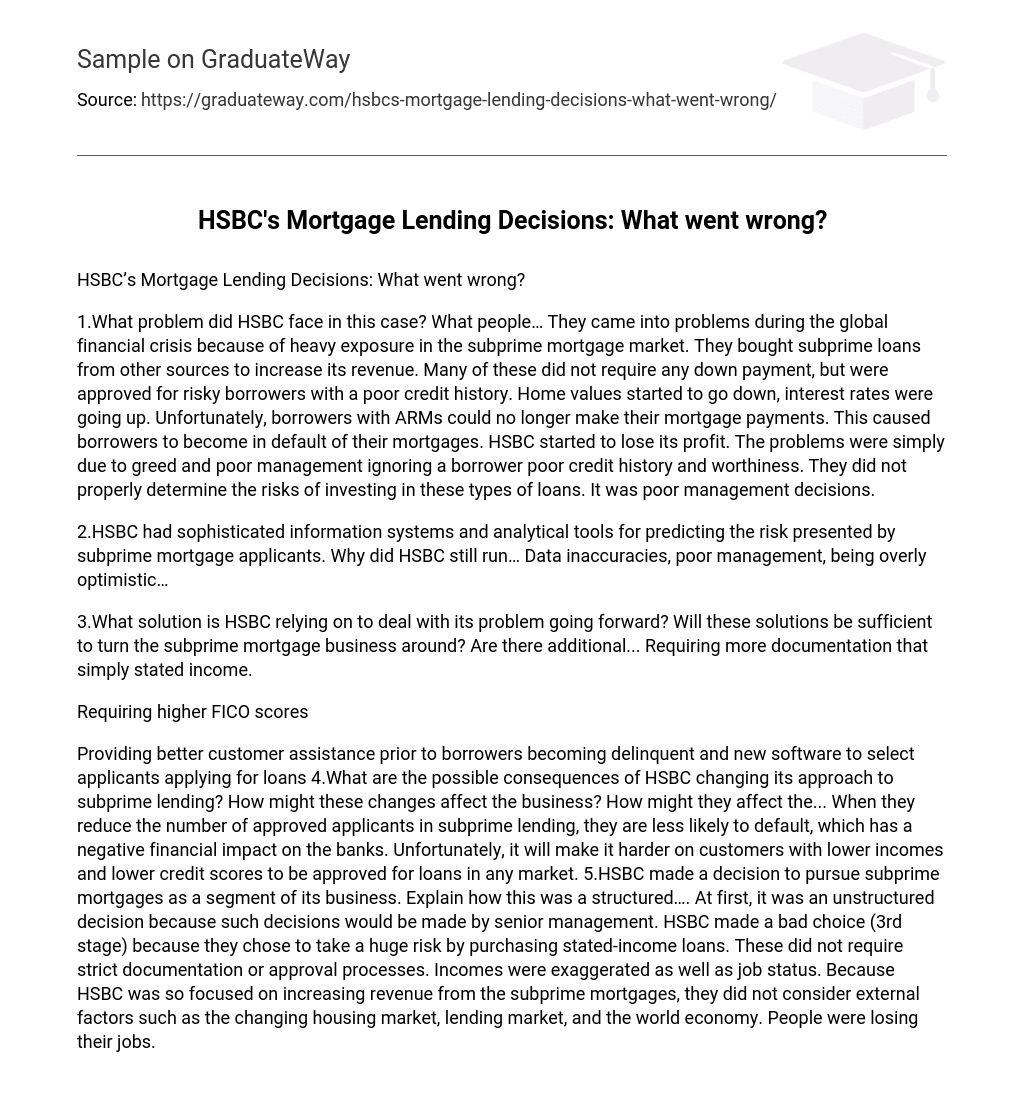What solution is HSBC relying on to deal with its problem going forward? Will these solutions be sufficient to turn the subprime mortgage business around? Requiring more documentation that simply stated income. Requiring higher FICO scores Providing better customer assistance prior to borrowers becoming delinquent and new software to select applicants applying for loans
What are the possible consequences of HSBC changing its approach to subprime lending? How might these changes affect the business? When they reduce the number of approved applicants in subprime lending, they are less likely to default, which has a negative financial impact on the banks. Unfortunately, it will make it harder on customers with lower incomes and lower credit scores to be approved for loans in any market.
HSBC made a decision to pursue subprime mortgages as a segment of its business. At first, it was an unstructured decision because such decisions would be made by senior management. HSBC made a bad choice (3rd stage) because they chose to take a huge risk by purchasing stated-income loans. These did not require strict documentation or approval processes. Incomes were exaggerated as well as job status. Because HSBC was so focused on increasing revenue from the subprime mortgages, they did not consider external factors such as the changing housing market, lending market, and the world economy. People were losing their jobs.





